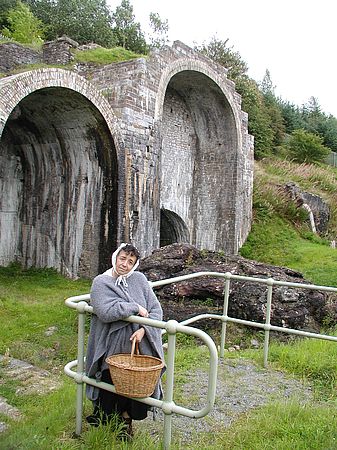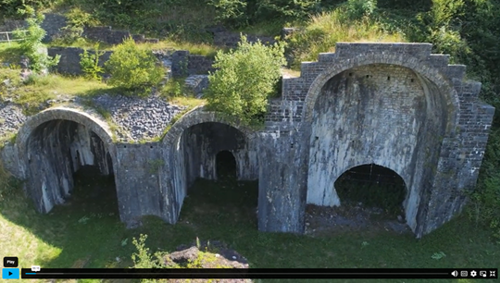OWNERSHIP
The Sirhowy Ironworks were first established in 1778. Between 1794 and 1818, they were operated by William Borrow, Rev. Matthew Monkhouse and Richard Fothergill. In 1818 the works were acquired by James Harford of Harford, Partridge and Co. of Ebbw Vale and, from this date on, were operated as part of the Ebbw Vale Ironworks in the valley to the east. Sirhowy supplied Ebbw Vale with pig iron and there it was worked into wrought iron and, from the end of the 19th century onwards, into steel.
Enjoy a video tour below:
FURNACES
Here at Sirhowy we have some of the few remains of this early iron-making empire. To furnace at the southern end of the site is one of the oldest, but, by 1899, it had been converted into a limekiln.
INNOVATIONS
In 1844, when Abraham Darby & Co bought both works, there were five furnaces at Sirhowy. A series of innovations followed, the most notable of which was the perfection of hot blast by George Parry of Ebbw Vale in 1850. By using a bell and cone he closed the previously open furnace top. The hot gases could now be piped down and used to heat the blast in hot blast ovens.
RECONSTRUCTIONS
The 1877 reconstruction reflects these changes. Two furnaces which stood in front of the two smaller arches were replaced with one huge free-standing furnace which towered above the existing furnace wall. A special pneumatic hoist had to be constructed to charge the raw materials into the furnace top. A large circular opening which can be found in the top of the middle arch held the cast-iron well for this.
BEAR
The 'bear' from the furnace can be seen in front of the arch. This was a mixture of iron, un-burnt coke, brick and slag which accumulated at the bottom of the furnace and had to be periodically removed.
The waste gases were brought from the backs of the furnaces by cast-iron pipes to be burnt in the ovens. A certain amount of coal was also used. Within the arches lies the blast passage through which a cast-iron main brought air from the steam blowing engines to the hot blast ovens. The heated air from these then ran to the furnaces.
The 1877 reconstruction shows the assembly areas for the raw materials behind the furnaces. Coke came from the coke ovens, iron ore from the calcining kilns (where the ore was roasted to drive out some of the impurities) and limestone from Trefil Quarries to the north. The raw materials were dropped into bins and the prepared raw materials were withdrawn and wheeled in charging barrows to be dropped into the furnace tops. After about 12 hours the burden had been reduced to molten iron and slag to be tapped at the furnace mouth and run into pig beds or iron slag tubs.
COKE
By 1877 the amount of iron cast was more than could be contained in the cast houses and they were partly demolished. Even after iron making ceased at Sirhowy around 1883 it continued to produce coke for Ebbw Vale until finally closing in 1905.
The site is a scheduled ancient monument of national importance.
 Sirhowy Ironworks
Sirhowy IronworksContact Information
Name of Team: Economic Development
Telephone Number: 01495 355937 or 07968 472812
Address: The General Offices, Steelworks Road, Ebbw Vale, Blaenau Gwent. NP23 6DN
Email Address: alyson.tippings@blaenau-gwent.gov.uk

